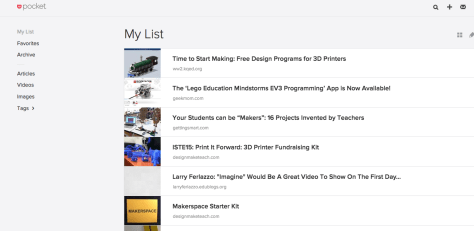My latest post for NEO offers advice on how to develop a workflow to help you compile the hundreds of teaching ideas you gather from social media and other digital sources. Solving the Curation Equation: Efficient Methods for Collecting Teaching Resources relates some of the secrets I use to save myself time when I bookmark those resources — and when I need to find them later. Though my current favorite tool is Wakelet, you can easily adapt the suggestions in this article to any tool you use. Speaking of Wakelet, here is my page of public Wakelet lists to which I’ve just added “Books for Maker Ed/Design Thinking/STEAM.”
Here are my other NEO Articles in case you missed them: Podcast Pedagogy: Leveraging Audio Programs for Learning, Six Ways to Support Spatial Reasoning Skills Online, Let’s Talk a Good Game: Mining Talk Shows for Classroom Engagement Ideas, How to Do More with Less Screen Time, How to Facilitate Meaningful Discussions in Hybrid or Virtual Classrooms, Top Ed Tech Tools for Differentiation, From Normal to Better: Using What We’ve Learned to Improve Education, Applying Universal Design for Learning in Remote Classrooms, How Distance Learning Fosters Global Collaboration, How to Use Design Thinking in the Classroom, and How to S.T.E.A.M. Up Distance Learning.
A couple of specific articles that you may want to read are: Podcast Pedagogy (which pairs well with this recent list from Common Sense) and From Normal to Better: Using What We’ve Learned to Improve Education. The latter article was written last August, and I think it’s a good reminder of the improvements we can made in education based on what we learned last year instead of returning to status quo.








